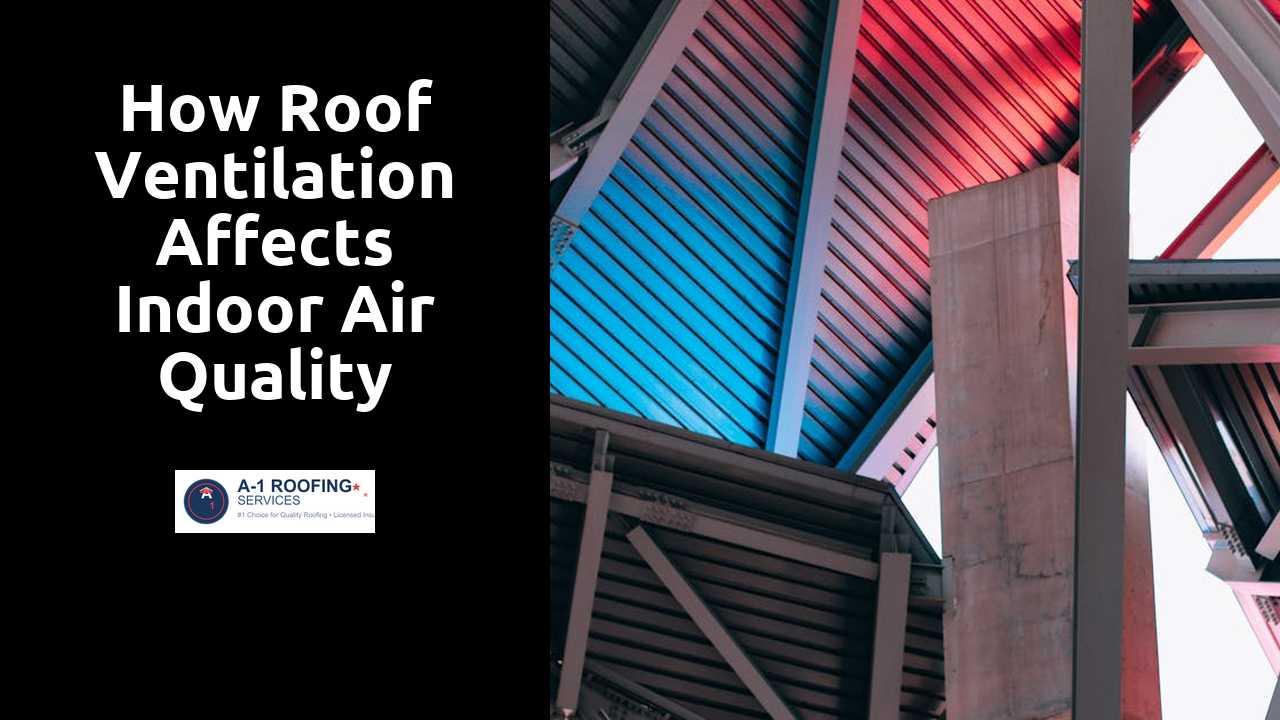
How Roof Ventilation Affects Indoor Air Quality
Table Of Contents
The Role of Ventilation in Preventing Mold
Proper ventilation in a building plays a crucial role in minimizing conditions conducive to mold growth. When moisture accumulates within indoor environments, it creates an ideal breeding ground for mold spores. Effective ventilation ensures that humid air is expelled and replaced with drier air from outside. This exchange is particularly important in areas prone to dampness, such as bathrooms and kitchens, where moisture levels can spike significantly.
In addition to reducing humidity, ventilation aids in maintaining overall air quality. Stagnant air traps pollutants, allergens, and mold spores, all of which can have detrimental health effects. By facilitating air movement, proper roof ventilation helps to lower these risks, creating a healthier living environment. This proactive approach is essential not only for mold prevention but also for ensuring that indoor air remains clean and breathable.
This is an essential article for anyone looking to learn more about the topic.
Conditions That Foster Mold Growth
Mold thrives in environments where moisture levels are high. Common sources of excess moisture in homes include leaks, high humidity, and inadequate ventilation. Areas such as attics, basements, and bathrooms are particularly vulnerable due to stagnant air and accumulated humidity. When these conditions persist, the likelihood of mold spores taking hold and proliferating increases significantly, creating health hazards and damaging structures.
Temperature plays a crucial role in mold growth as well. Warm climates can exacerbate the problem, providing the perfect breeding ground for fungi. Insulation issues can also contribute by trapping heat and moisture in spaces where it should not be. During colder months, condensation can form on cooler surfaces if warm air rises and meets the cold roofing materials. This cycle of moisture can create an ideal environment for mold to establish itself and persist throughout the year.
Seasonal Effects on Roof Ventilation
The efficiency of roof ventilation can vary significantly between seasons, influenced primarily by temperature fluctuations and weather patterns. In the warm months, increased temperatures can lead to higher attic heat levels, which necessitate effective ventilation to dissipate heat and prevent roof material degradation. Conversely, during the colder months, proper insulation and ventilation work together to maintain indoor heat while minimizing the risk of ice dams, which can occur when warm air escapes into the colder attic space.
Adjustments to ventilation strategies throughout the year can optimize energy use and indoor air quality. In summer, homeowners might benefit from mechanisms that enhance air circulation, such as ridge vents and attic fans, which draw out hot air. As winter approaches, focusing on sealing leaks and allowing for controlled air exchange helps retain heat while preventing excess moisture from settling in the attic, thereby protecting the integrity of the roofing system and the overall comfort of the living space.
Adjusting Ventilation Strategies by Season
As seasons change, the temperature and humidity levels inside and outside a home fluctuate. In the summer, higher outdoor temperatures and humidity can lead to condensation in the attic. This makes it essential to ensure adequate roof ventilation to allow warm, moist air to escape. Homeowners may need to adjust their ventilation strategies by increasing attic airflow through the use of powered vents or ridge vents to combat the heat and moisture that builds up.
During the winter months, the approach shifts to managing the risks associated with cold temperatures and snow buildup. Insulation becomes crucial during this time to maintain indoor warmth and prevent ice dam formation. Homeowners can benefit from ensuring proper ventilation that allows for the passage of cold air, reducing the chance of trapped warm moist air that can contribute to mold growth and compromised air quality. Regularly inspecting and adjusting ventilation systems in accordance with seasonal changes can greatly impact the overall effectiveness of a home's air quality management.
Energy Efficiency and Roof Ventilation
Effective roof ventilation plays a vital role in maintaining energy efficiency throughout the home. Proper airflow helps regulate indoor temperatures by allowing hot air to escape during warmer months and keeping cooler air circulating. This natural temperature control reduces the reliance on heating and cooling systems, leading to lower energy consumption. Homeowners often discover that investing in appropriate ventilation can yield significant savings on monthly energy bills.
In addition to reducing energy costs, a well-ventilated roof can prolong the life of roofing materials. Excess heat and moisture buildup can cause premature wear and tear, leading to costly repairs or replacements. By ensuring that ventilation is adequate, homeowners not only enhance energy efficiency but also protect their investment in roofing, promoting long-term durability and performance in various weather conditions.
How Ventilation Can Lower Energy Costs
Proper roof ventilation plays a significant role in maintaining an energy-efficient home. By allowing heated air to escape during warmer months, it helps regulate indoor temperatures. This reduces the reliance on air conditioning systems, which can be energy-intensive. Effective ventilation also contributes to eliminating excess moisture, preventing the need for dehumidifiers, thereby further conserving energy.
During colder months, appropriate ventilation helps maintain consistent temperatures in the attic space. This prevents ice dam formation, which can lead to costly repairs. Additionally, proper airflow ensures that heating systems do not have to work as hard, lowering overall energy consumption. By fostering a balanced environment, homeowners can enjoy reduced energy bills while enhancing the lifespan of their HVAC systems.
Related Links
Comparing Active and Passive Roof Ventilation MethodsCommon Mistakes to Avoid in Roof Ventilation Installation